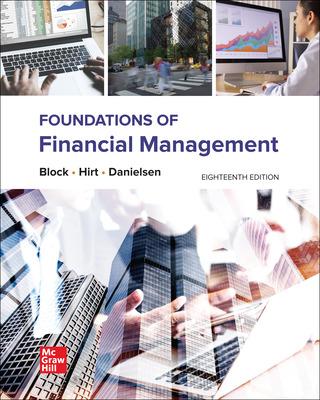Question
a. How the value of any asset whose value is based on expected future cash flows is determined. b. An example of the valuation of
a. How the value of any asset whose value is based on expected future cash flows is determined.
b. An example of the valuation of a 10-year, $1000 par value bond with a 10% annual coupon if the required return rate is 10%.
c. An example of what happens to the bond value above if the required return increases to 13% or decreases to 7%, particularly as it approaches maturity. Why might this be important to the client?
d. An example of yield to maturity, using a 10-year, 9%, annual coupon, $1000 par value bond that currently sells for $887 and the same bond selling for $1134.20. Why is the fact that a bond is a discount or premium bond matter to the client?
e. An example of how call provisions might impact the investment, considering a 10-year, 10%, semi-annual coupon bond with a par value of $1000, currently selling for $1135.90, producing a nominal yield to maturity of 8%. However, the bond can be called after four years for a price of $1050. You want to demonstrate the bonds nominal yield to call and explain the likelihood of actually receiving either the YTM or YTC.
Step by Step Solution
There are 3 Steps involved in it
Step: 1

Get Instant Access to Expert-Tailored Solutions
See step-by-step solutions with expert insights and AI powered tools for academic success
Step: 2

Step: 3

Ace Your Homework with AI
Get the answers you need in no time with our AI-driven, step-by-step assistance
Get Started


